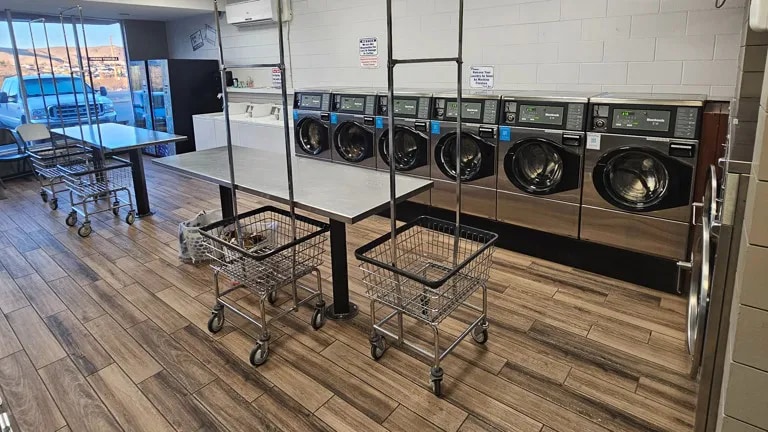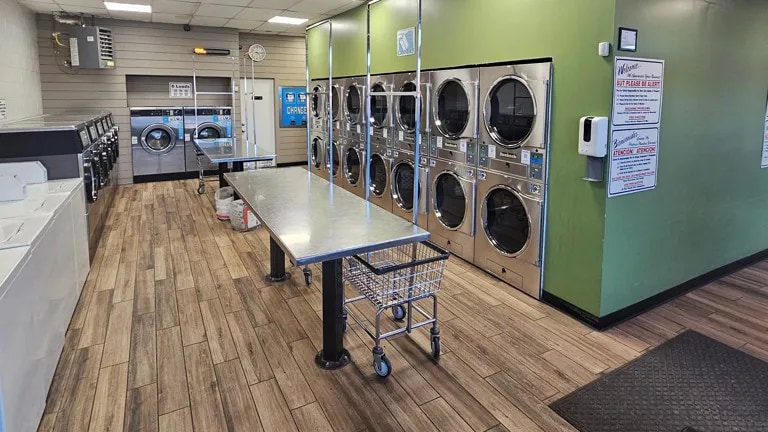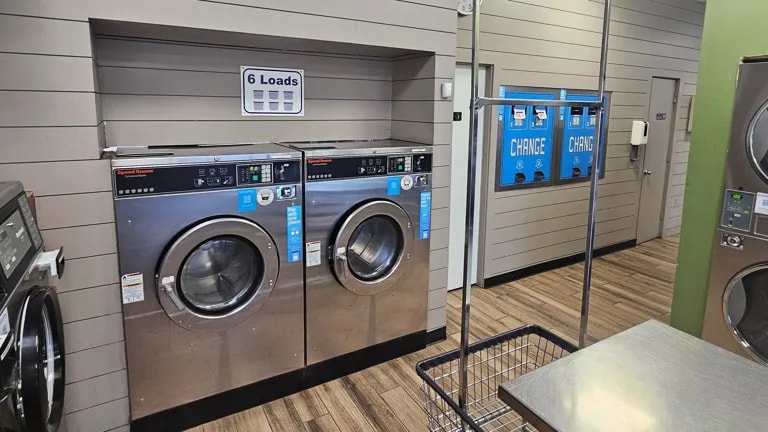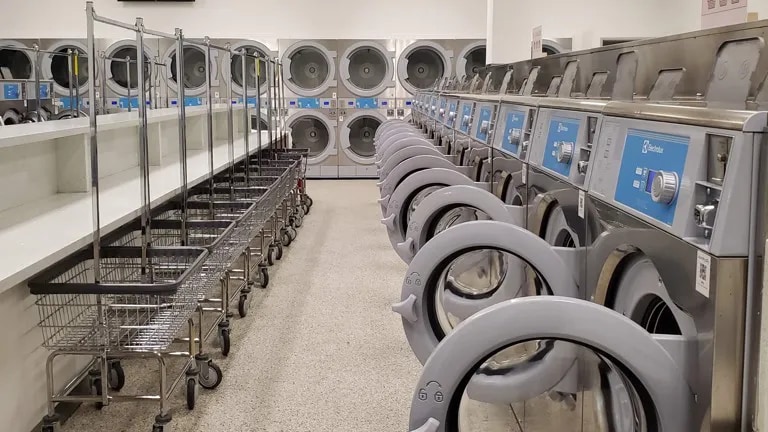How to Buy a Laundromat: Investment Strategies for Commercial Property Owners

Imagine turning the key to a new venture that delivers both steady income and a business that almost runs itself. Investing in a laundromat is not just about cash flow, it is about building a sustainable, innovative business for the future. This guide shows you exactly how to buy a laundromat with clear, actionable steps. You will learn how to plan, finance, and manage your investment simply and effectively. Explore laundromats for sale and start your journey toward a smart investment.
Article Summary
- Develop a comprehensive business plan with market research, financial projections, and operational strategy.
- Assemble a professional team and secure funding through diverse financing options.
- Conduct due diligence, negotiate favorable terms, and ensure legal and regulatory compliance.
- Explore expansion strategies and advanced technology integration to boost revenue and efficiency.
Develop a Comprehensive Business Plan
Start by gathering data on your local market. Analyze local demographics, consumer behavior, and the competition. Look for gaps in service beyond eco-friendly options. For example, you might find areas underserved by extended operating hours or modern conveniences such as digital payment systems and mobile apps. Consider markets lacking value-added services like wash-and-fold, pickup and delivery, or even enhanced customer amenities such as comfortable waiting areas. These gaps highlight opportunities to differentiate your business and capture unmet customer needs.
Financial Projections
Estimate your start up costs, including purchase price, renovations, equipment, and working capital. Plan for operating expenses and forecast your revenue. Use a cash on cash return calculator to better understand your ROI.
Operational Strategy & Business Model
Define the services your laundromat will offer. Choose from self-service, wash-and-fold, or both. Integrate eco-friendly practices like energy efficient machines and water saving technology. This leads to lower utility costs and appeals to environmentally conscious customers.
Marketing Plan & Brand Identity
Outline a marketing plan that covers advertising, promotions, and community engagement. Focus on sustainability and innovation to build a clear brand identity. For a broader investment perspective, check out CRE investments.
Assemble a Professional Team
Who Should Be on Your Team?
Build a team of experts to guide you through the process. Your core team should include a commercial real estate broker, a real estate attorney, a property inspector, and an accountant. These professionals help you evaluate opportunities and negotiate deals.
Why Is a Professional Team Important?
A strong team provides expert insights at every step. For example, a broker can identify the best properties while an attorney reviews contracts. Their guidance reduces risk and ensures you make informed decisions.
Additional Specialists
Depending on your needs, consider adding specialists like environmental consultants, architects, or property managers. This extra support tailors the process to your specific investment strategy.
Secure Funding

Determine Your Budget
Calculate your total investment by adding the purchase price, renovation costs, equipment expenses, and working capital. A clear budget helps you set realistic expectations and guides your financing decisions. Lean on your accountant or financial advisor for expert help in gathering accurate figures.
Explore Diverse Financing Options
Look into traditional options like SBA loans and private investors. You can also consider innovative approaches such as seller financing, and equipment financing.
Compare each method to find the best fit for your needs. Your commercial real estate broker can offer insights into which options suit your situation best.
Credit Score and Business History Requirements
Understand the key criteria that lenders look for, such as your credit score and business history. Prepare all necessary documentation to support your loan application.
For detailed guidance on securing funds, check out financing in CRE.
Find the Right Property
Selecting the right property is key to a successful laundromat investment. Consider factors like location, building condition, and accessibility to your target customers. The right property can boost revenue and reduce operating costs.
Use LoopNet to search for commercial real estate and businesses for sale. LoopNet is the number one online marketplace for commercial properties. Its comprehensive listings and advanced search filters help you find the ideal opportunity for your laundromat.
Conduct Due Diligence

Examine the laundromat's revenue, expenses, cash flow, and profitability. Break down the financial statements to spot trends. Lean on your accountant for a clear analysis.
Check the age, condition, and maintenance history of the equipment. Look for opportunities to upgrade to energy saving models because this can reduce costs over time. Your property inspector can provide expert insight.
I help gain a clearer picture of financial performance, use a NOI calculator.
Lease or Ownership Analysis
Review lease terms, transferability, and the remaining term. Understanding these details helps you decide if leasing or owning is best. Your commercial real estate broker can offer useful comparisons.
Legal, Regulatory & Utility Compliance
Verify permits, licenses, and zoning rules. Ensure the property meets ADA and environmental standards. Rely on your real estate attorney to confirm legal compliance.
Analyze water, electricity, and sewer usage to uncover cost-saving opportunities. For property valuation during due diligence, use a commercial property valuation tool.
Compare pricing with similar properties by reviewing the sales comparison approach. Also, check the capitalization rate to understand key performance metrics. Your broker and accountant can help benchmark these figures.
Negotiate and Purchase

Making a Strategic Offer
Use your due diligence and financial analysis to craft a clear offer. Include contingencies to protect your investment. A strong offer sets the stage for successful negotiations. Lean on your commercial real estate broker and accountant to review the numbers and help shape a competitive proposal.
Negotiation & Financing Terms
Negotiate the purchase price and closing costs with the seller. Discuss financing options, including seller financing if available. This approach helps you secure favorable terms and manage cash flow. Your broker can offer insights that ensure you get the best deal.
Securing Legal Counsel & Finalizing the Deal
Work with an attorney to review all agreements. Ensure every document is accurate and complete before finalizing the deal. Legal counsel protects your interests and minimizes future risks. This step gives you the confidence that every detail is in order.
Prepare for Operations
Renovations, Upgrades & Sustainability Enhancements
Plan for operational improvements and essential renovations. Identify areas for eco-friendly upgrades that lower energy and water costs. These enhancements lead to better efficiency and a more appealing facility. Moreover, sustainable investments reduce operating costs and increase revenue, which ultimately boosts your profitability.
Staffing, Training & Technology Integration
Hire staff who fit your business values and customer service standards. Train them in sustainable practices and modern technology use. Integrate tools like remote monitoring and mobile payments because they simplify operations and improve efficiency.
Marketing, Promotion & Branding
Launch a marketing strategy that emphasizes modern convenience and sustainability. Use digital channels to share your green credentials and service benefits. This builds a clear brand identity that attracts eco-conscious customers.
Post-Purchase Operational Strategy & Long-Term Business Planning
Develop a detailed transition plan to smoothly take over operations. Create an ongoing strategy that outlines growth opportunities and scalability, such as franchising or adding new services. Plan exit strategies early because they guide your long-term financial goals.
Multi-Location Expansion Planning

View your first laundromat as the starting point of a larger portfolio. Once your initial location runs smoothly, track key performance data like customer traffic, operating costs, and revenue. Use these insights as a blueprint for evaluating new sites.
Economies of Scale
Planning for expansion lets you negotiate multi-unit leases and secure bulk pricing on equipment and supplies. These strategies reduce costs and streamline your operations. Lower expenses lead to higher overall revenue and a more profitable investment portfolio.
Advanced Technology Integration
Implement systems such as IoT sensors and integrated management software. These tools monitor machine performance and predict maintenance needs. They provide real-time data that reduces downtime and lowers operational costs.
Centralized Management for Multiple Locations
When expanding, use a centralized digital platform to manage several locations from one dashboard. This approach improves consistency, simplifies reporting, and enhances decision-making. It ensures smooth operations as your business grows.
Additional Tips for Success
Industry Insights: How Can I Stay Informed?
Subscribe to industry newsletters and join trade groups. Attend webinars and conferences to learn about new technologies and best practices. Set a monthly reminder to review market reports and regulatory updates.
Building a Strong, Sustainable Brand: How Do I Stand Out?
Focus on environmental efficiency and top notch customer service in every interaction. Collect customer feedback and use it to improve your brand message. Clearly communicate your green practices through your website and marketing materials.
Cost Management & Efficiency: How Can I Boost My ROI?
Track your operating costs and review utility bills regularly. Use technology to automate tasks like scheduling and inventory management. Invest in energy-efficient upgrades that reduce expenses over time, because lower costs lead to higher ROI.
Frequently Asked Questions
How can I determine if a laundromat is a good investment?
the laundromat's financial performance by reviewing its revenue streams, operating expenses, and cash flow. Use tools like a NOI calculator and compare metrics such as cap rate and cash-on-cash return against industry benchmarks. Also, consider the location, customer base, and potential for incorporating energy-efficient upgrades to reduce long-term costs.
How can I enhance operational efficiency and sustainability in my laundromat post-purchase?
Focus on integrating modern technologies such as automated payment systems, remote equipment monitoring, and energy-efficient machines to streamline operations. Implementing eco-friendly practices not only reduces utility costs but also attracts environmentally conscious customers. Additionally, a well-planned transition and long-term operational strategy can pave the way for growth and scalability.
Closing Thoughts
Each step of this guide focuses on sustainability and long-term growth because clear strategies lead to solid investments.
Apply these actionable steps to build a resilient and profitable laundromat business. If you are new to commercial property acquisitions, check out How to Buy Commercial Property for a broader context.
